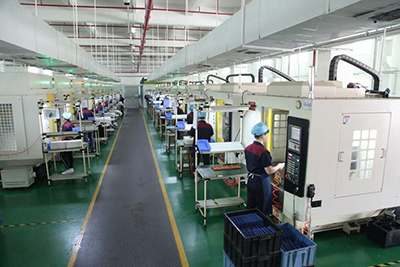Quick Link
Find Products
Contact us
News
Home > News > What is the rapid prototype method?
What is the rapid prototype method?
The term "rapid prototyping" refers to a group of techniques and processes used in product development and design to quickly create physical prototypes or models of a product or part. The primary goal of rapid prototyping is to accelerate the product development process by allowing designers and engineers to test and validate their ideas, make improvements, and iterate on designs before committing to full-scale production. Rapid prototyping methods can vary, but some common techniques and principles include:
3D Printing: This is one of the most well-known rapid prototyping methods. It involves creating a three-dimensional object by depositing material layer by layer, based on a digital model. 3D printing allows for the rapid creation of complex shapes and functional prototypes.
CNC Machining: Computer Numerical Control (CNC) machining involves using computer-controlled machines to cut, mill, or drill a prototype from a solid block of material. While it may take longer than 3D printing, CNC machining can produce high-precision prototypes in various materials.
Sheet Metal Prototyping: For products that involve sheet metal components, rapid prototyping can involve cutting and bending sheet metal to create prototypes. This is commonly used in industries like automotive and aerospace.
Injection Molding Prototyping: Injection molding is used for creating prototypes of plastic parts. Rapid injection molding techniques allow for relatively quick production of plastic prototypes, which can be used for testing and design verification.
Vacuum Casting: This technique is used for creating small batches of prototypes from a master model. A silicone mold is created from the master model, and then a material like polyurethane is poured into the mold to make duplicates.
Laser Cutting and Engraving: Laser cutting and engraving machines can quickly create 2D prototypes and parts from various materials, including wood, acrylic, and fabric.
Foam Modeling: Foam prototypes are often used in the early stages of product development to create rough, low-cost representations of a design. They can be easily shaped and modified.
Virtual Prototyping: While not a physical method, virtual prototyping involves creating digital simulations and models of a product to test its functionality, ergonomics, and other aspects before physical prototypes are built. This can save time and resources in the design process.
Rapid prototyping is valuable because it allows for faster design iterations, reduced development costs, and a better understanding of a product's performance and functionality before moving into full-scale production. It's widely used in industries such as manufacturing, aerospace, automotive, consumer electronics, and product design.
3D Printing: This is one of the most well-known rapid prototyping methods. It involves creating a three-dimensional object by depositing material layer by layer, based on a digital model. 3D printing allows for the rapid creation of complex shapes and functional prototypes.
CNC Machining: Computer Numerical Control (CNC) machining involves using computer-controlled machines to cut, mill, or drill a prototype from a solid block of material. While it may take longer than 3D printing, CNC machining can produce high-precision prototypes in various materials.
Sheet Metal Prototyping: For products that involve sheet metal components, rapid prototyping can involve cutting and bending sheet metal to create prototypes. This is commonly used in industries like automotive and aerospace.
Injection Molding Prototyping: Injection molding is used for creating prototypes of plastic parts. Rapid injection molding techniques allow for relatively quick production of plastic prototypes, which can be used for testing and design verification.
Stereolithography (SLA): SLA is a 3D printing technology that uses liquid photopolymer resin and a laser to build up a prototype layer by layer. It is known for its high accuracy and is often used for creating detailed and intricate prototypes.

Vacuum Casting: This technique is used for creating small batches of prototypes from a master model. A silicone mold is created from the master model, and then a material like polyurethane is poured into the mold to make duplicates.
Laser Cutting and Engraving: Laser cutting and engraving machines can quickly create 2D prototypes and parts from various materials, including wood, acrylic, and fabric.
Foam Modeling: Foam prototypes are often used in the early stages of product development to create rough, low-cost representations of a design. They can be easily shaped and modified.
Virtual Prototyping: While not a physical method, virtual prototyping involves creating digital simulations and models of a product to test its functionality, ergonomics, and other aspects before physical prototypes are built. This can save time and resources in the design process.
Rapid prototyping is valuable because it allows for faster design iterations, reduced development costs, and a better understanding of a product's performance and functionality before moving into full-scale production. It's widely used in industries such as manufacturing, aerospace, automotive, consumer electronics, and product design.



